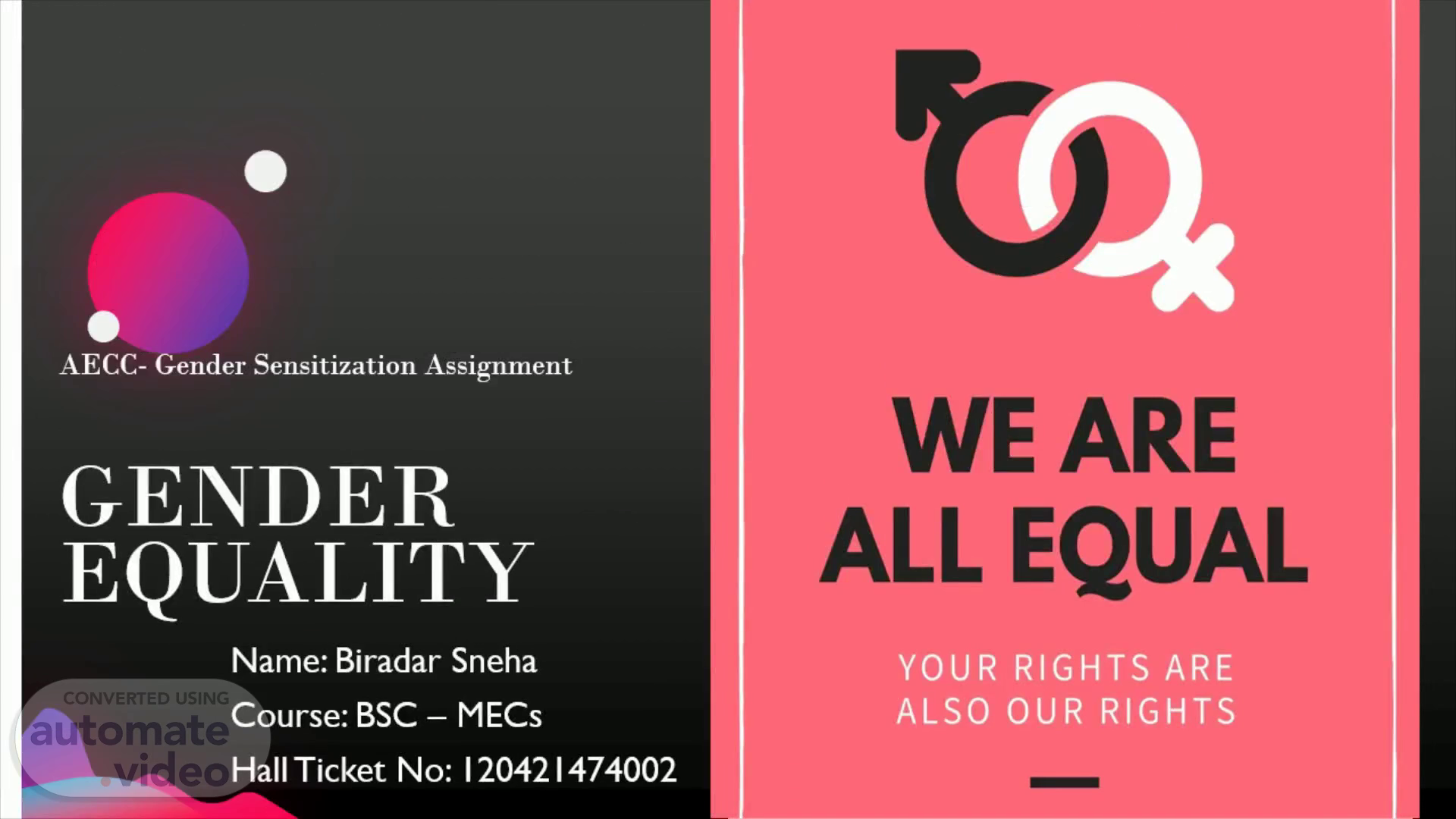
Page 1 (0s)
AECC- Gender Sensitization Assignment GENDER EQUALITY.
Page 2 (30s)
2. What is Gender Equality?. Gender Equality, also known as sexual equality is the state of equal ease of access to resources and opportunities regardless of gender, including economic participation and decision-making ; and the state of valuing different behaviors, aspirations and needs equally, regardless of gender. Gender Equality is a human right..
Page 3 (49s)
Gender Equality: Non-Discrimination and Women’s Rights.
Page 4 (1m 21s)
Why do we n eed Gender Equality?. We need Gender Equality urgently. Gender equality prevents violence against women and girls. It is essential for economic prosperity. Societies that value women and men as equal are safer and healthier. Gender Equality is intrinsically linked to sustainable development and is vital to the realization of human rights for all. Gender Equality leads to better legal protections, better racial equality, it reduces poverty and human trafficking and the most important is that it leads to peace..
Page 5 (1m 57s)
What happens if Gender Equality is not ensured?. Inequalities faced by girls can begin right at birth and follow them all their lives. In some coun trie s, girls are deprived of access to proper health care or proper nutrition, leading to a higher mortality rate. As girls move into adolescence, gender disparities widen. Child marriage affects girls far more than boys. Globally, nearly 15 million girls under age 18 are married every year – or 37,000 each day. Marrying young also affects girls’ education. About one third of developing countries have not achieved gender parity in primary education..
Page 6 (2m 35s)
This is how Gender Inequality looks like in India.
Page 7 (3m 3s)
7. What can we do to fix these issues?. It is critical to enhance the value of girls by investing in and empowering them, with education, life, sport and much more. By increasing the value of girls we can collectively contribute to the achievement of specific results. UNICEF India’s 2018-2022 Progamme has been developed in response to the identification of deprivations that Indian children face. These include: Health: Reducing excess female mort alit y under five and supporting equal care-seeking behavio u r for girls and boys. Nutrition: Improving nutrition of women and girls, especially by promoting more equitable eating practices. Child Protection: Ending child and early marriages. Social Policy: Supporting state governements to develop gender-responsive cash transfer programmes and supporting women’s leadership in local governance..
Page 8 (3m 46s)
Thank You. Biradar Sneha. Course: BSC-MECs Hall Ticket No: 120421474002.